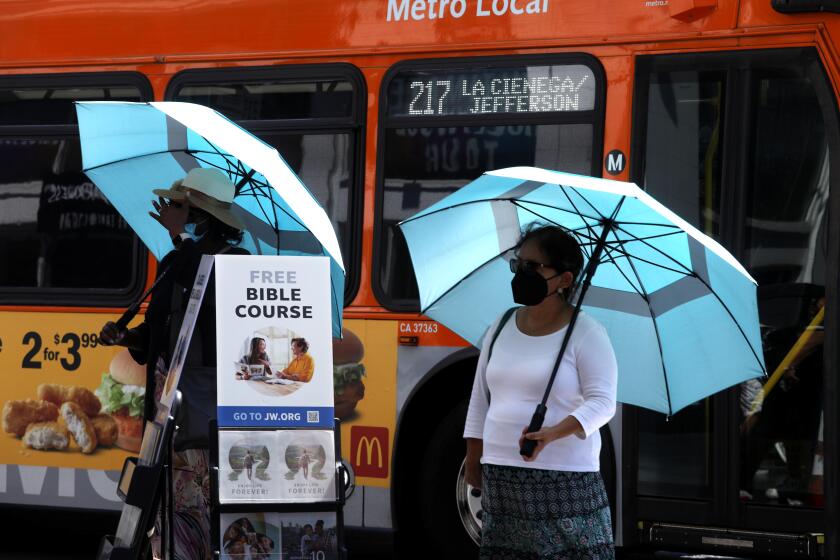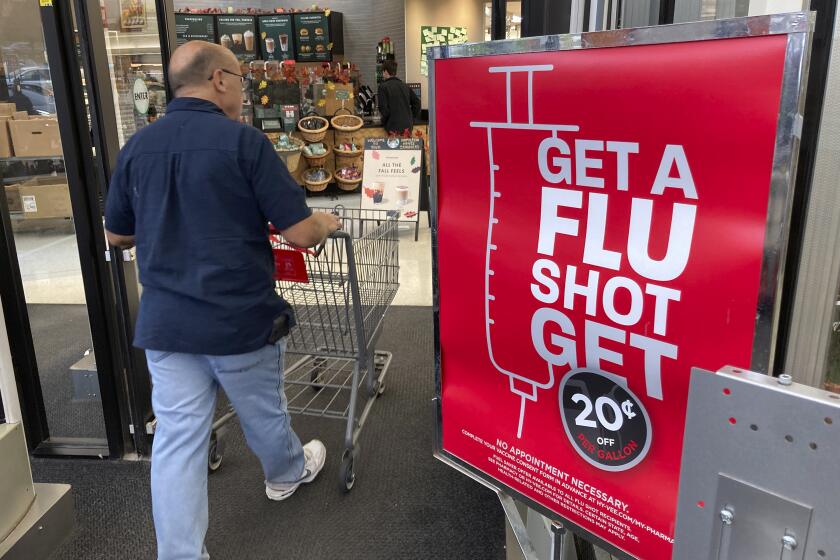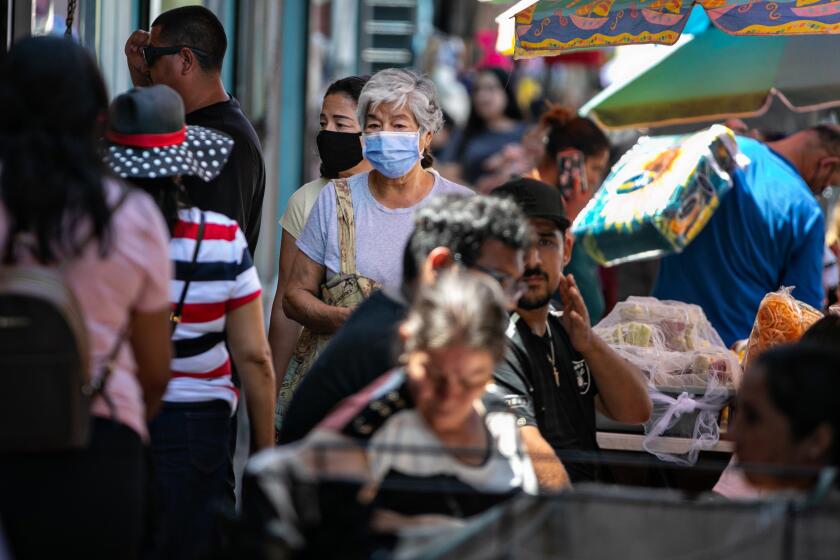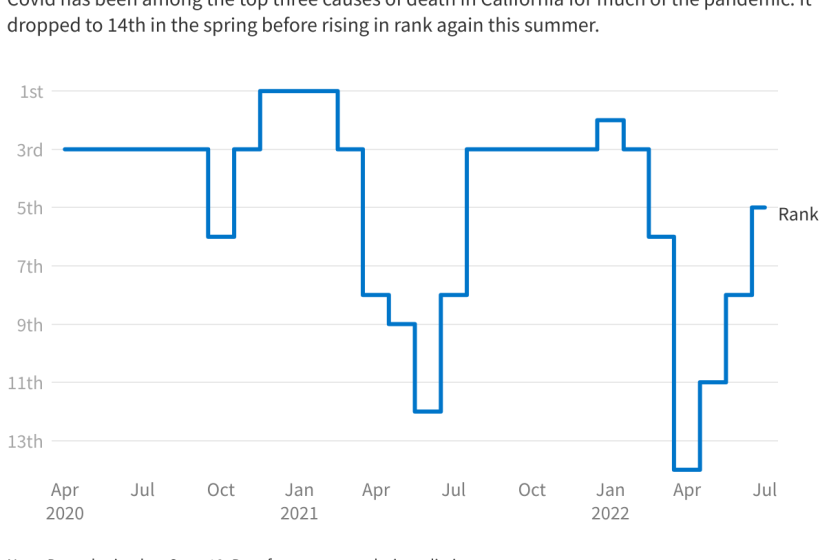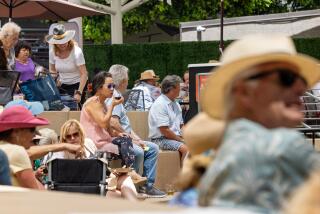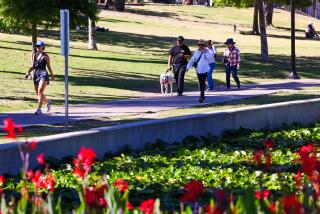With COVID on the retreat, are Halloween, Thanksgiving and winter holiday gatherings safe?
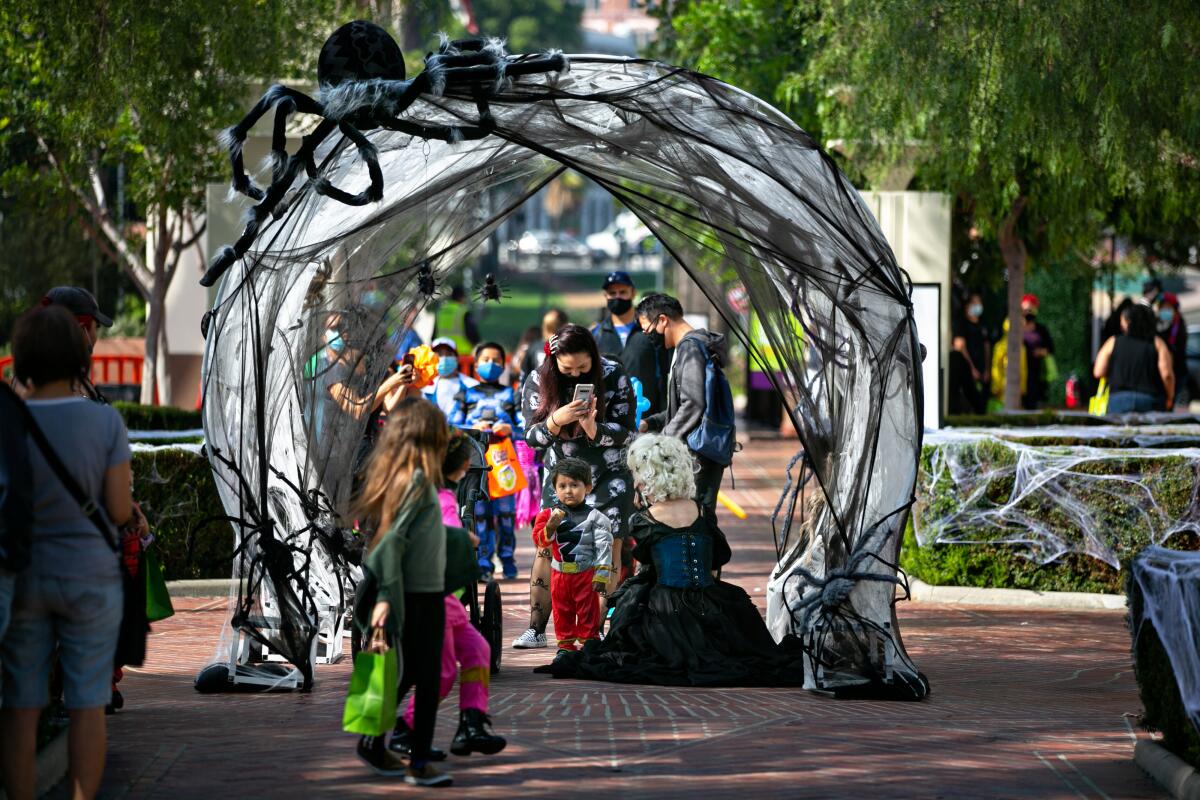
- Share via
COVID-19 has scrapped many large holiday celebrations during the last two years.
But with the pandemic in a lull and plentiful resources available to help thwart the worst the coronavirus has to offer, there’s hope that fall and winter gatherings — including Halloween, Thanksgiving and other end-of-year holidays — could be closer to normal for many Californians.
“People should plan on being able to get together with the people that they love,” Los Angeles County Public Health Director Barbara Ferrer said recently.
But that optimism, as always, is tinted with caution. Families with members who are at high risk of developing severe COVID-19 illness should consider taking some additional precautions, officials say. There’s also the lurking possibility of a resurgence over the colder months, as has happened each of the past two years, and any significant upticks in transmission could warrant additional intervention.
“As we have learned throughout the pandemic, each surge and each variant brings with it unique characteristics relative to our neighborhoods’ and communities’ specific conditions,” including level of immunity, the California Department of Public Health wrote in a statement to The Times. “As we enter the next phase with COVID-19, we will be ready to build on what we have learned over the past two years to meet the COVID-19 challenges that lie ahead.”
As officials in California and beyond try to assess how severe a fall-and-winter coronavirus wave may be, one key factor is the growth of several new subvariants now emerging.
First and foremost, officials say now is the time for residents to get both an updated Omicron COVID-19 booster — formulated to combat BA.5, the dominant coronavirus strain circulating nationwide — and a flu shot, if they haven’t already.
Since both flu and COVID-19 vaccinations take time to reach full potency, getting the shots now will help ensure optimal protection heading into November and December.
“Because the bivalent booster has great potential for providing significantly increased protection against Omicron, which is what’s circulating now, this boost to the immune system has the potential to make a big difference in reducing disruptions and heartache this fall,” Ferrer said.
Ferrer said it is still possible for people to recover from COVID-19 and get reinfected several weeks later.
Among them was Pfizer Chief Executive Albert Bourla, who said he tested positive for the coronavirus in mid-August and then tested positive again in late September. In a statement, Bourla said he hadn’t received his company’s updated bivalent Omicron booster yet, since he was following CDC recommendations to wait three months after a prior infection before getting the updated shot.
The ongoing risk of reinfection is one reason why layers of protection remain sensible, health experts said.
“Vaccination — or negative COVID-19 test result verification, especially indoors — remains an important strategy to reduce transmission in large gatherings, especially where masks are removed for eating [and] drinking, and where activities that increase transmission risk are occurring, even when masks are being worn,” according to the state public health department.
Influenza has been largely dormant the past two seasons, possibly due to the infection-prevention protocols put in place to ward off the coronavirus.
For indoor gatherings that include higher-risk individuals, Ferrer recommended guests get tested on the day of the event. Doing so lowers, although does not eliminate, the risk that an infected individual who’s asymptomatic or presymptomatic may unwittingly expose others.
Fresh airflow is also important, as that can help flush out viral particles.
If an event is held inside, opening windows or doors can also help maximize ventilation, officials say. And while that’s usually not a problem in Southern California, such a step may be tougher as temperatures drop.
Those at higher risk also might feel safer if they wear a high-quality, high-filtration mask, such as an N95, KN95 or KF94, according to Ferrer.
“We should all take advantage of the fact that we can be together with the people we love this holiday. We’re just going to have to be careful if there are people that we’re gathering with that are at higher risk,” she said.
While there’s no shortage of pundits, politicians and other prognosticators clamoring to declare the end of the pandemic, the ultimate call is up to the World Health Organization.
The caveat is that people should pay attention to coronavirus transmission rates.
California last month replaced its broad recommendation for masking in indoor public settings with a more nuanced set of guidelines tied to the COVID-19 community levels established by the U.S. Centers for Disease Control and Prevention. The CDC sorts counties into three tiers — low, medium and high — based on their levels of coronavirus transmission and the impact that spread is having on local hospitals.
When a county’s COVID-19 community level is high, the state recommends everyone 2 and older mask up in indoor public places.
In the medium level, masking is recommended in crowded indoor spaces for those at higher risk. Everyone else is advised to consider wearing a mask in indoor public settings.
And in those counties where the COVID-19 community level is low, state health officials say people at higher risk should consider wearing a mask in public indoor places, but for everyone else, it is a matter of personal preference.
As of Thursday, virtually all California counties — except for three in the state’s far north — were in the low community level.
In Los Angeles County, coronavirus case rates continue to decline. For the seven-day period that ended Friday, L.A. County was recording about 1,100 cases a day, a 12% decrease from the prior week. Still, that is well above the springtime low of about 600 cases a day.
On a per capita basis, the latest case rate is about 79 a week for every 100,000 residents; a rate between 50 and 99 is considered substantial, while 100 or greater is high. The case rate hasn’t been this low since mid-April, between the first Omicron wave that began after Thanksgiving and the second in the late spring and summer, fueled by a variety of subvariants, including BA.5.
The COVID-19 death rate has fluctuated since a summer peak in early August and remains elevated. Since August, L.A. County has been recording an average of 70 to 125 COVID-19 deaths every week. By contrast, in May, there were 25 to 50 deaths per week.
The number of Californians dying of COVID-19 — and the demographics of those falling victim — has shifted notably from the pandemic’s first two years.
While coronavirus transmission is lower, it’s still substantial, Ferrer said. And there are a lot of vulnerable L.A. County residents — millions with underlying health conditions, who are 65 and older or who are unvaccinated.
“I worry a lot about the potential for our death rate from COVID to rise again this winter, disproportionately affecting those who are older,” Ferrer said Thursday. “However tired we may be of dealing with this shape-changing, mutating virus, I hope we can rally as a community and make every effort to protect our most vulnerable residents. This new fall bivalent booster can save lives.”
There is much to suggest coronavirus transmission is not currently increasing, Ferrer said. Data she presented recently show relatively low numbers of new clusters at worksites and schools, and a relatively low percentage of recent emergency room visits are related to COVID-19.
Still, officials are closely watching coronavirus levels in L.A. County’s wastewater, which no longer are dropping and may have plateaued — likely signifying “that viral transmission in L.A. County is no longer decreasing,” Ferrer said.
This illustrates why it remains important to take steps to thwart transmission, including getting the new booster shot, she said.
“Getting a bivalent booster helps you retain and update the protection you already have, and this is very important as we move into the cooler months when we spend more time indoors and more time gathering for celebrations and holidays.”
More to Read
Sign up for Essential California
The most important California stories and recommendations in your inbox every morning.
You may occasionally receive promotional content from the Los Angeles Times.
